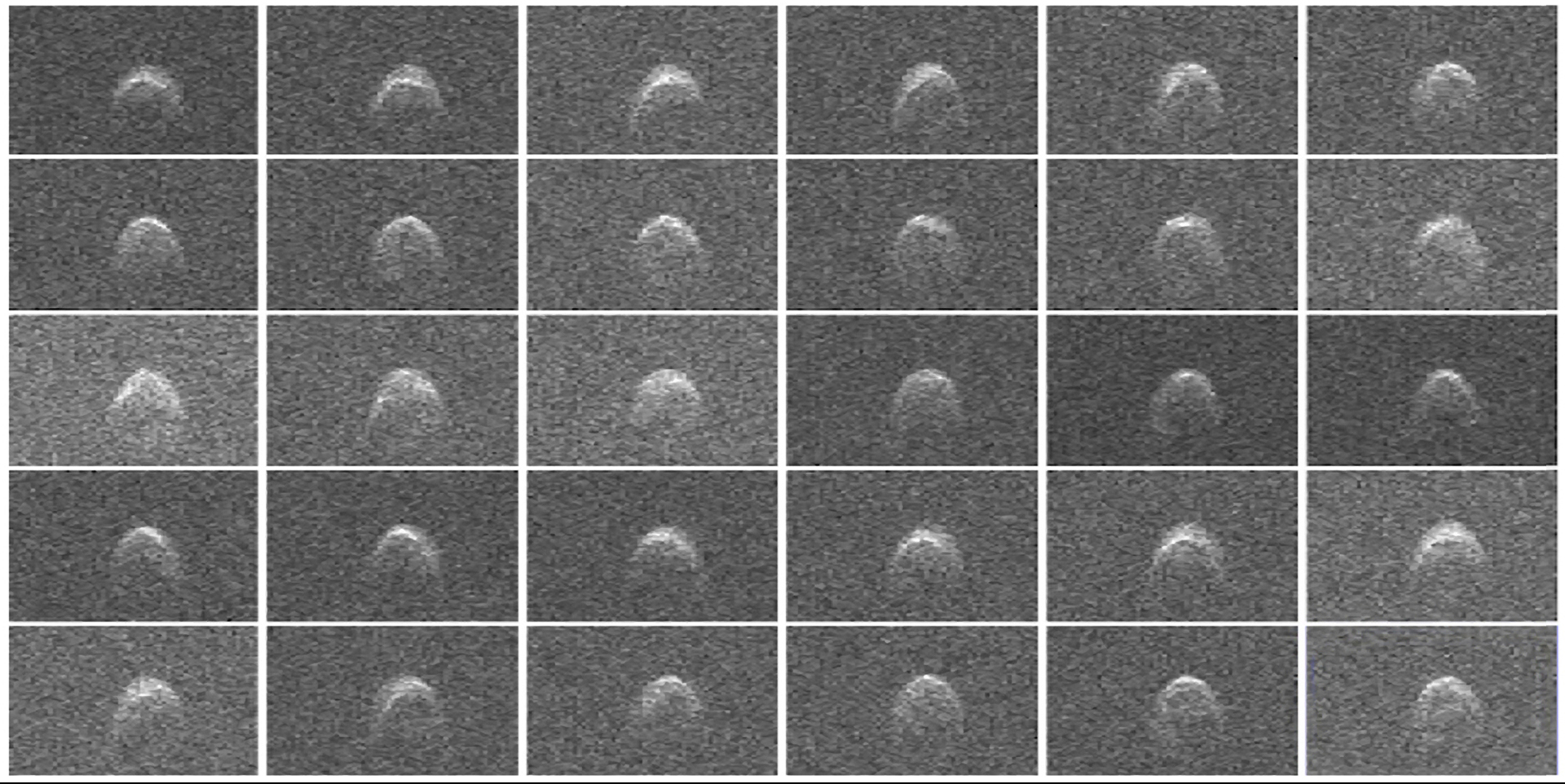NASA Captures Radar Images of Huge Asteroid Near Earth (Photo)

NASA scientists captured detailed radar views of a huge asteroid as it whizzed by Earth earlier this month.
The new radar images show the asteroid 2005 WK4 as it passed Earth on Aug. 8 at a safe distance of 1.93 million miles (3.1 million kilometers), which is about 8.2 times the distance between Earth and the moon. The images revealed the large asteroid to be between 660 and 980 feet across (200 to 300 meters), NASA officials explained in a statement.
NASA captured the asteroid images by using the agency's Space Network antenna in Goldstone, Calif., a 230-foot (70 m) antenna that can be used to conduct radar astronomy as well as track spacecraft in deep space.
"Radar is a powerful technique for studying an asteroid's size, shape, rotation state, surface features and surface roughness, and for improving the calculation of asteroid orbits," NASA officials said. "Radar measurements of asteroid distances and velocities often enable computation of asteroid orbits much further into the future than if radar observations weren't available."
NASA scientists keep a close watch over near-Earth asteroids that could threaten the planet sometime in the future. Thus far, United States assets have found more than 98 percent of known NEOs, NASA officials wrote in a release.
In June, scientists using a telescope in Hawaii discovered the 10,000th near-Earth-object. Although that may be a large number, there are many more potentially hazardous space rocks to seek out.
About 10 percent of the tracked asteroids are 3,300 feet (1 kilometer) in size. If one of these large objects were to impact the Earth, it could be a global problem. None of these larger asteroids are in danger of impacting the Earth, according to NASA. So far, scientists have found more than 90 percent of the huge space rocks.
Breaking space news, the latest updates on rocket launches, skywatching events and more!
A mission scheduled to launch in 2016 will send a robotic spacecraft to a possibly dangerous near-Earth object known as asteroid (101955) Bennu.OSIRIS-Rex will collect samples from the asteroid when it intercepts the space rock in 2020. The probe could study the asteroid for up to 505 days.
Follow Miriam Kramer @mirikramer and Google+. Follow us @Spacedotcom, Facebook and Google+. Original article on SPACE.com.

Miriam Kramer joined Space.com as a Staff Writer in December 2012. Since then, she has floated in weightlessness on a zero-gravity flight, felt the pull of 4-Gs in a trainer aircraft and watched rockets soar into space from Florida and Virginia. She also served as Space.com's lead space entertainment reporter, and enjoys all aspects of space news, astronomy and commercial spaceflight. Miriam has also presented space stories during live interviews with Fox News and other TV and radio outlets. She originally hails from Knoxville, Tennessee where she and her family would take trips to dark spots on the outskirts of town to watch meteor showers every year. She loves to travel and one day hopes to see the northern lights in person. Miriam is currently a space reporter with Axios, writing the Axios Space newsletter. You can follow Miriam on Twitter.

